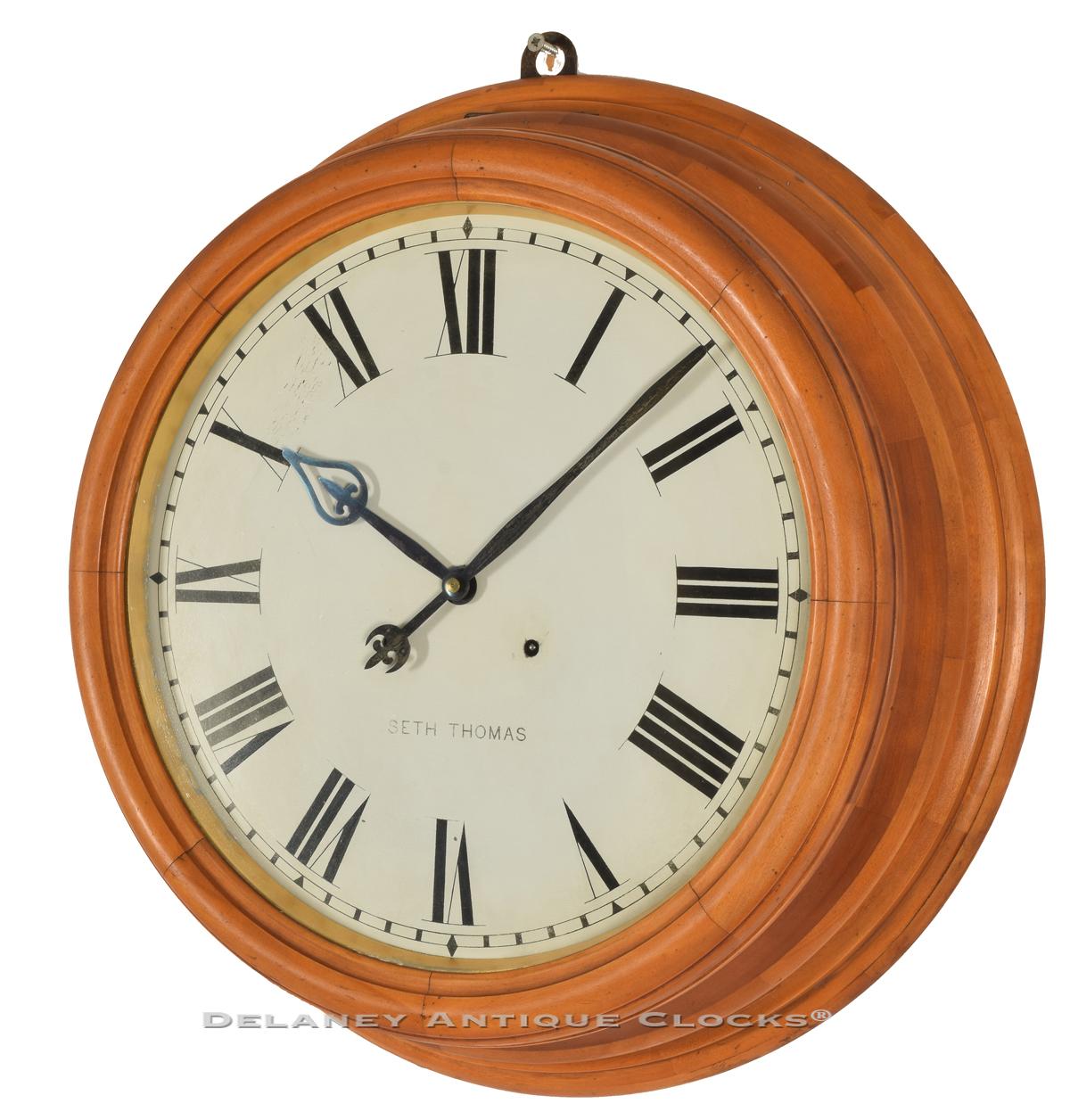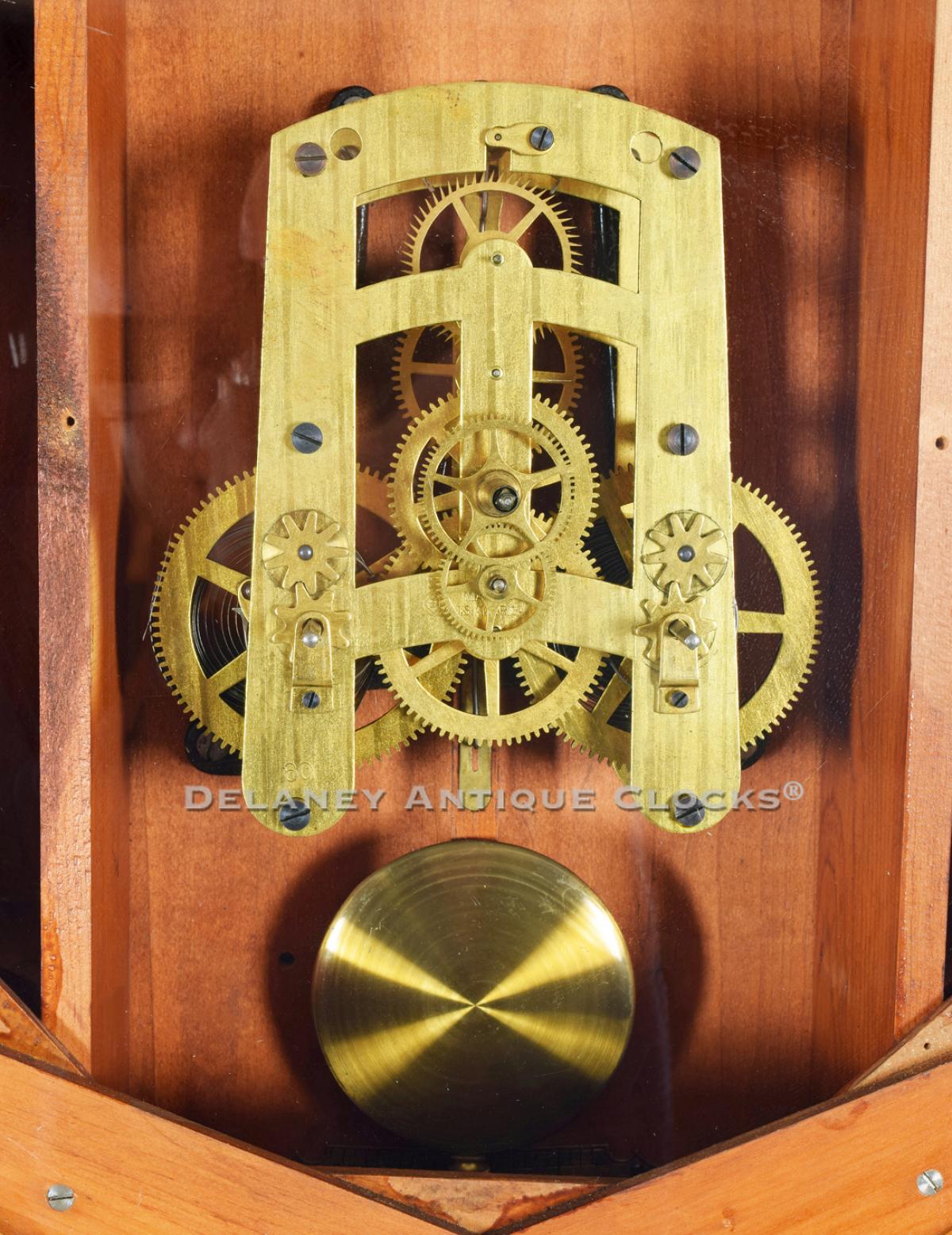Seth Thomas Gallery Clock. Featuring an 18 inch diameter dial and a 15-day movement. 221184.
This model was made by the Seth Thomas Clock Company in Thomaston, Conn. It was first introduced in 1884 and made until 1924. The basic model sold for $35.00.
This is a very good example. The case is constructed in a very light mahogany and it retains an older finish. This case features laminate construction. Six levels of wood are used to create the depth of 6.5 inches. The back of the clock measures 25.5 inches in diameter. The bezel measures approximately 21.5 inches in diameter and is fitted with glass. This glass protects the dial. The dial is painted on zinc and measures 18 inches in diameter. This dial is original to this clock and is good overall condition. There are a few areas of light flaking between the Roman numerals X and XI. Large Roman style numerals demark the hours. The large hands can be read from across the room. The brass constructed movement is a double spring time only design. It is designed to run 15-days on a full wind. It features a Graham deadbeat escapement and is secured to an iron bracket which which is mounted to the back of the case.
This clock was made circa 1910. The case is 25.5 inches across the back and 6.5 inches deep.
221184.
Seth Thomas was born in Wolcott, Connecticut, in 1785. He was apprenticed as a carpenter and joiner and worked building houses and barns. He started in the clock business in 1807, working for clockmaker Eli Terry. Thomas formed a clock-making partnership in Plymouth, Connecticut, with Eli Terry and Silas Hoadley as Terry, Thomas & Hoadley. In 1810, he bought Terry's clock business, making tall clocks with wooden movements. Seth chose to sell his shares in the partnership in 1812, moving in 1813 to Plymouth Hollow, Connecticut, where he set up a factory to make metal-movement clocks. In 1817, he added shelf and mantel clocks. By the mid-1840s, He successfully transitioned to brass movements and expanded his operations by building a brass rolling mill and a cotton factory. In 1853, He incorporated the business but continued to be the majority shareholder. This clock business expanded until it became one of the "BIG Seven" in Connecticut. Their product line had offerings that competed at every price point, from kitchen clocks to precision regulators. Seth Thomas died in 1859. The community of Plymouth Hollow so revered him that they changed the name on July 6, 1875, to Thomaston in his honor. After his death, his son, Aaron, took over the company's leadership. Aaron is credited with increasing the business by adding a number of new case styles and improving production methods. The company went out of business in the 1980s.






